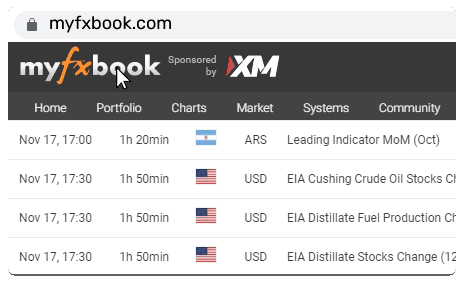USD Keep the Strength Through This Week Ahead

Inflation jumps again in Japan
JPY: Inflation drive BoJ real policy rate lower
The yen has experienced a slight strengthening correction, although it remains significantly weaker. This weakness can be attributed not only to the strength of the US dollar but also to the market's ongoing delay in anticipating any changes to the monetary stance of the Bank of Japan (BoJ).
While real yields in most G10 countries have been rising, Japan continues to see a decline in real yields. In the US, we are now at a point where the real fed funds policy rate is entering positive territory. As the US Consumer Price Index (CPI) continues to decrease in the coming months, the real policy rate in the US will likely rise further.
Friday, we observed the opposite situation in Japan as indicated by the release of nationwide CPI data. The core nationwide CPI annual rate increased from 3.1% to 3.4% in April. This annual rate had previously declined due to government subsidy measures that helped reduce energy-related inflation. The core CPI rate reached its peak at 4.2% in January, but it fell to 3.1% in February and March. The already released Tokyo data for April had already suggested an upward movement in inflation, so this data is not surprising. Nevertheless, the CPI data clearly demonstrate businesses' intent to pass increased costs on to consumers. In its April Outlook for the Economy and Prices report, the BoJ forecasted a core CPI of 2% for FY2024, which brings them closer to formally acknowledging that their goal has been achieved. However, the inflation forecast for FY25 is 1.6%, justifying the need to maintain the current ultra-loose policy stance.
To get a true underlying picture, it is important to exclude energy from the core nationwide CPI annual rate. When energy is excluded, annual CPI continues to accelerate, reaching 4.1% - the first breach of the 4.0% level since August 1981.
Over a span of thirteen months, the core-core annual CPI rate has risen from -0.7% to 4.1%, representing a significant increase of 4.8 percentage points. The speed of this increase is like the speed of core CPI movement in the US, where annual core CPI accelerated by 5.2 percentage points from February 2021 to March 2022. In the Eurozone, it took 20 months to see a 5.0 percentage point jump in the core annual rate. The combination of increased speculation about tightening monetary policy by the Federal Reserve and ongoing inflation in Japan, along with its ultra-loose policy, is contributing to the rise of USD/JPY. While a shift in BoJ policy has been postponed, today's data strengthens the case for a potential policy change later this year. Therefore, I believe there are limitations to the upward movement of USD/JPY, and the window for a higher USD/JPY could close abruptly.
CYCLICAL STOCK UNDERPERFORMANCE WEIGHS ON EUR
Source: MacrobondEUR: The good news is priced as optimism fades
EUR/USD has experienced a downward breakout, and the technical analysis indicates a potential for further near-term decline. The support trendline, formed from the lows in September and November of the previous year, was broken Friday at 1.0775. Additionally, the 200-day moving average (MAV) at 1.0807 has also been breached, opening the possibility of additional selling pressure. While the US dollar has strengthened broadly due to receding concerns about the debt ceiling and continued hawkish statements from the Federal Reserve, optimism in Europe is also waning. One indicator I monitor, which strongly correlates with EUR/USD, is the performance of cyclical stocks compared to the overall Euro Stoxx 600 index (above image). After a period of strong outperformance, cyclical stocks are now underperforming again. This could reflect emerging negative news or a correction of excessive optimism back to a more realistic level. At present, I lean towards the latter explanation, as there has been no significant deterioration in data or news flow to warrant a reassessment of the outlook.
Indeed, the primary reason for revising the previous negative economic outlook was the sharp decline in natural gas prices, and that factor remains unchanged. The one-month forward contract for TTF natural gas fell below EUR 30 Friday for the first time since June 2021. MUFG commodities analyst estimates that to reach the 90% capacity target for winter 2023-24, 25 billion cubic meters of natural gas inventory inflows are required. To reach 100% capacity, it would require 33bcm. Last year, excluding Russian natural gas inflows, Europe managed to refill storage by 38bcm. With storage capacity already at 55%, Europe is in a remarkably favourable position to keep prices well-contained.
Considering the expected further decrease in inflation in the coming months, the prospects for households in the Eurozone remain positive. Thus, I see no reason for a sustained deterioration in sentiment that would justify a significant retracement in the upward move of EUR/USD. My year-end target for EUR/USD of 1.1500-1.1600 assumes that the Federal Reserve's tightening cycle will end this month, followed by rate cuts by year-end.
Thursday, Dallas Fed President Logan clearly stated that the data to justify a pause in June was not yet evident. Therefore, if the US rates market continues to price in a higher probability of a June rate hike, it is likely to result in further short-term gains for the dollar. Hence, the potential for downside in EUR/USD is mainly driven by the strength of the dollar rather than weakness in the Euro.
This content may have been written by a third party. ACY makes no representation or warranty and assumes no liability as to the accuracy or completeness of the information provided, nor any loss arising from any investment based on a recommendation, forecast or other information supplied by any third-party. This content is information only, and does not constitute financial, investment or other advice on which you can rely.



















